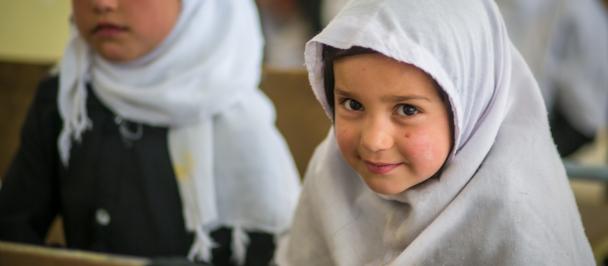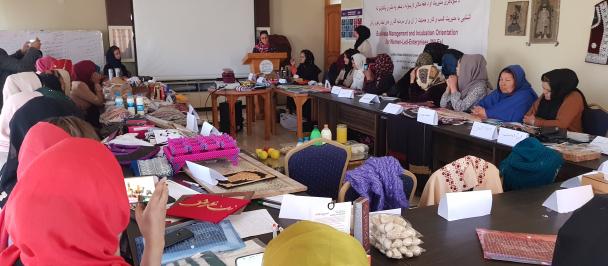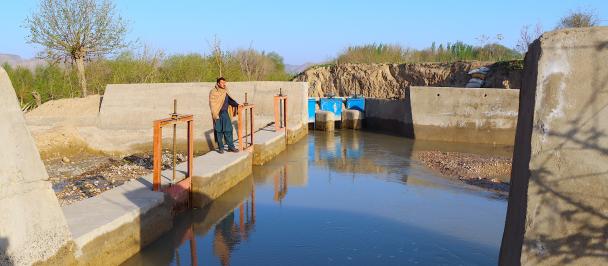UNDP Builds Protection Wall to Protect Crop Land from Flash Floods in Kot District
Rural Communities Livelihoods Protection
March 14, 2021
Newly built protection walls now protect more than 180 hectares of crop land from floods. © UNDP Afghanistan / CBARD / Murtaza Jahan
Kot is strategically located district in Nangarhar province. The population of more than 160,000 people is mostly involved in agriculture sector. The district's high fertility soil enables the district to grow wheat, corn, vegetables, and poppy that are considered to be its major crops.
A river that run through Kot is the main source of irrigation water for local farmers. However, taking into account seasonal heavy rains, it represents a source of destruction. Over the years, traditional flood control methods have proven to be ineffective, and flash floods destroyed cultivated lands and orchards along both sides of the river.
UNDP’s Community Based Agriculture and Rural Development (CBARD) project was the first to start working in the district of Kot, building greenhouses, orchards, protection walls and other irrigation structures in several villages of the area of Kot. Haibatkhil is one such village where locals would normally put rocks, logs, and sandbags on the riverbanks to prevent the soil from being swept away by the surging river. After having consulted with the community and the Nangarhar Directorate of Agriculture, Irrigation and Livestock, CBARD started constructing protection walls along both sides of the river. 170 locals were hired on daily wages to construct the protection wall. Within three months, 400-meter long and 2-meter-high stone walls were built on each side of the river.
Mohammad Maroof, a resident of Haibatkhil says: “Before the construction of the protection wall, agricultural lands next along the riverbanks were all at risk. Hundreds of hectares of agricultural land were directly threatened by floods, and every year, a large portion of cultivated lands were destroyed by seasonal floods.” He added “Now that the walls are built, farmers on both sides of the river can cultivate their lands with no fear of losing their crops.”
The positive impact of the protection wall is already visible within the community. More than 180 hectares of farmland is saved from destruction, and farmers are more engaged in improving and diversifying their crops. Many of them intend to plant orchards and thus earn higher incomes from their lands. Taking into account improvements in the district, CBARD has also installed commercial greenhouses and planted orchards for many farmers who previously had cultivated opium poppy. They can now cultivate two and sometimes three crops on the same land. A visible reduction in poppy cultivation is expected in Kot district as farmers and the community have expressed their commitment not to grow poppy as their incomes from the greenhouses and orchards are expected to be more than what they earned from growing poppy on the same lands.
Since its launch in 2018, the CBARD project has constructed more than 1000 commercial and micro greenhouses for farmers who otherwise would grow opium poppy in 12 districts of Farah, Badghis, and Nangarhar provinces. This brings more than 22 hectares of land under greenhouses coverage in the targeted provinces. Along with this, the project has planted more than 1040 hectares of fruit orchards for a total of 4169 beneficiaries in the mentioned provinces. The orchards produce fruits like apples, pomegranates, grapes, sweet oranges, lemons, peaches, plums, pears, walnuts, and persimmons.
The project is also working on constructing cool storages, raisin houses as well as irrigation and water management structures like irrigation canals, protection walls, water dividers, siphons, water intakes, and the like. These projects have prevented loss of agricultural land to floods and wastage of water; transforming hundreds of hectares of land in targeted districts which were left barren due to the lack of proper water distribution systems to fertile agricultural land. The main objective of the project is to encourage farmers to stop growing opium poppy, by improving the quality of alternative high value crops to increase income for the farmers.
Watch a short video

 Locations
Locations


